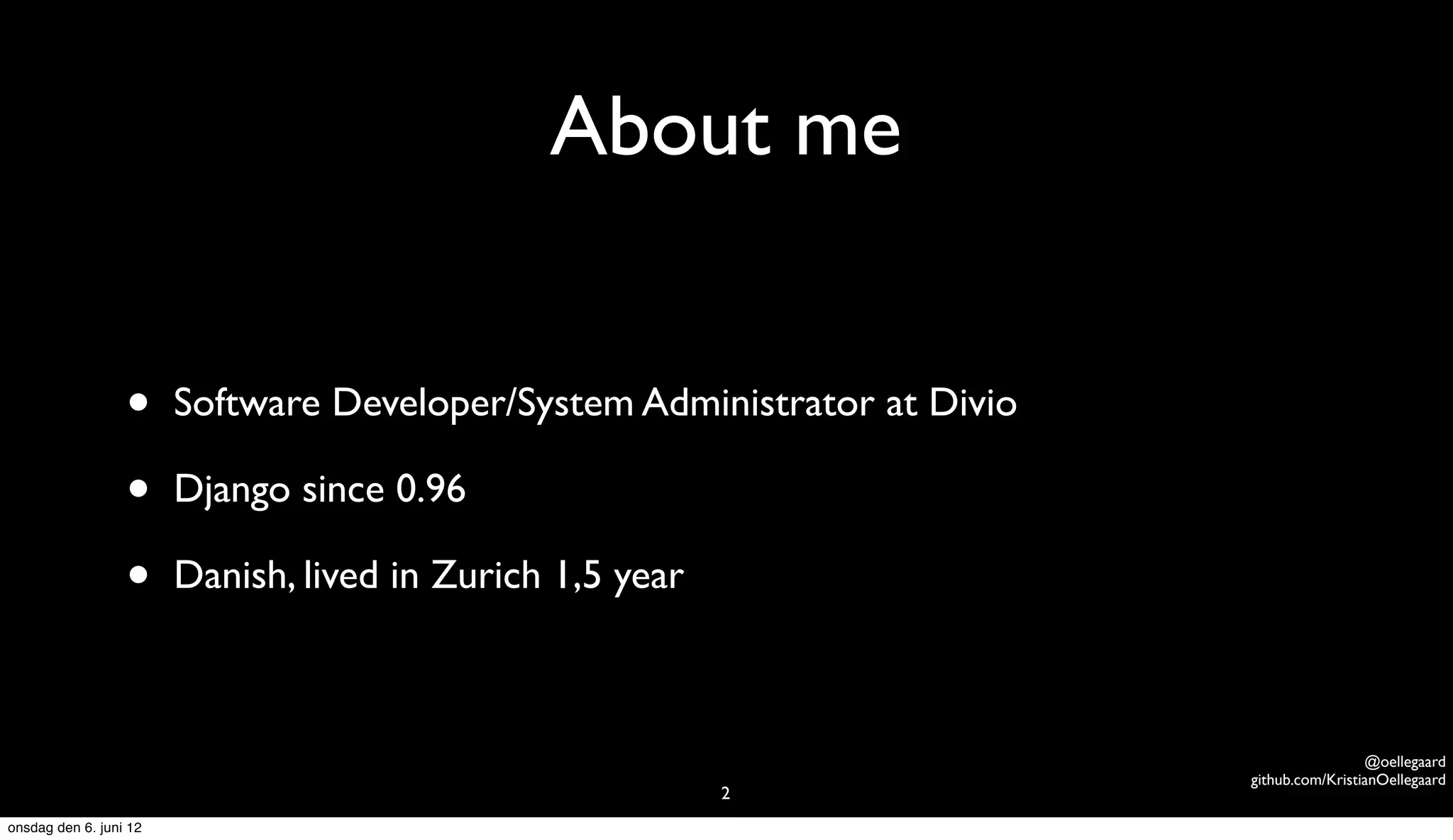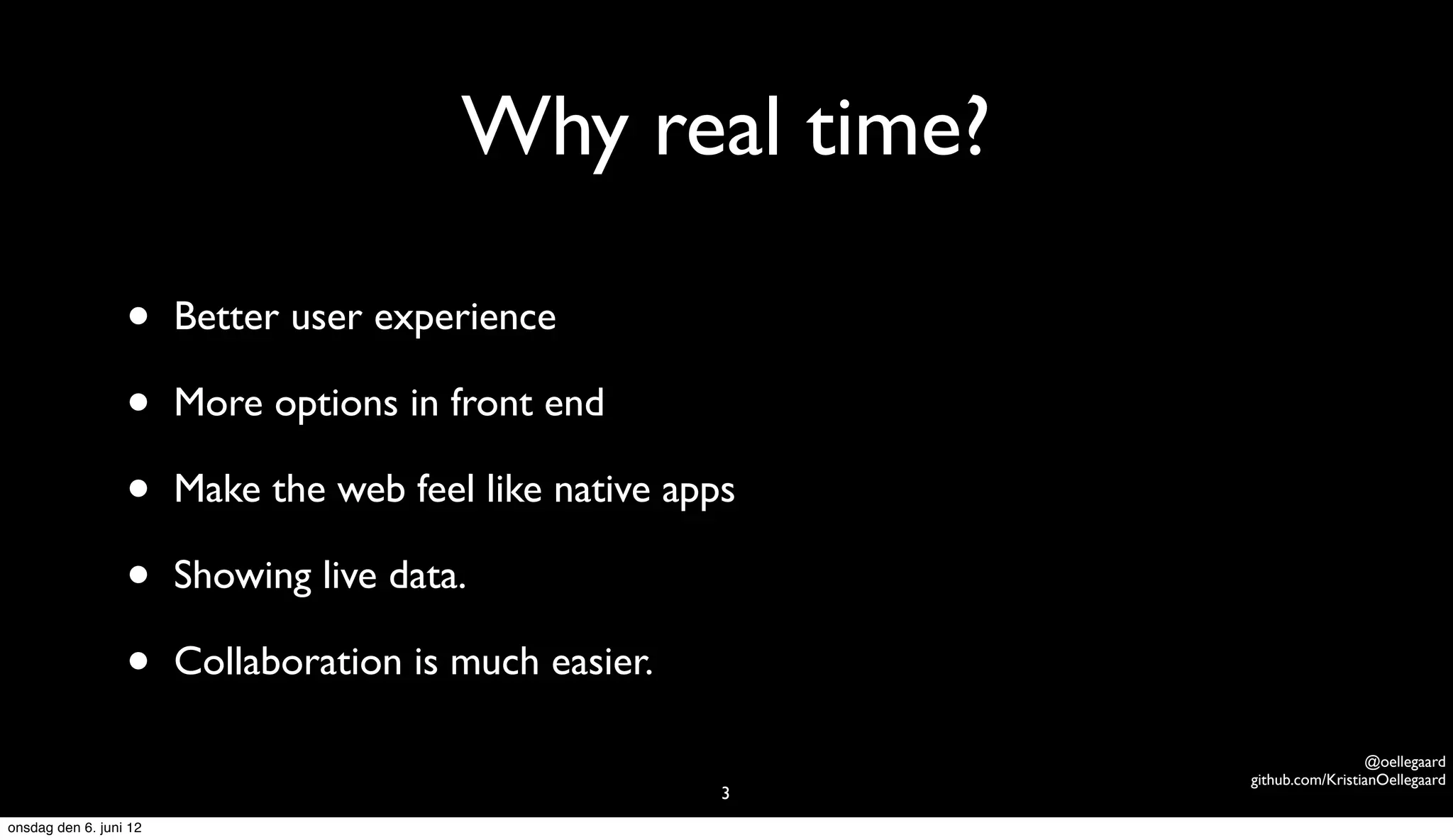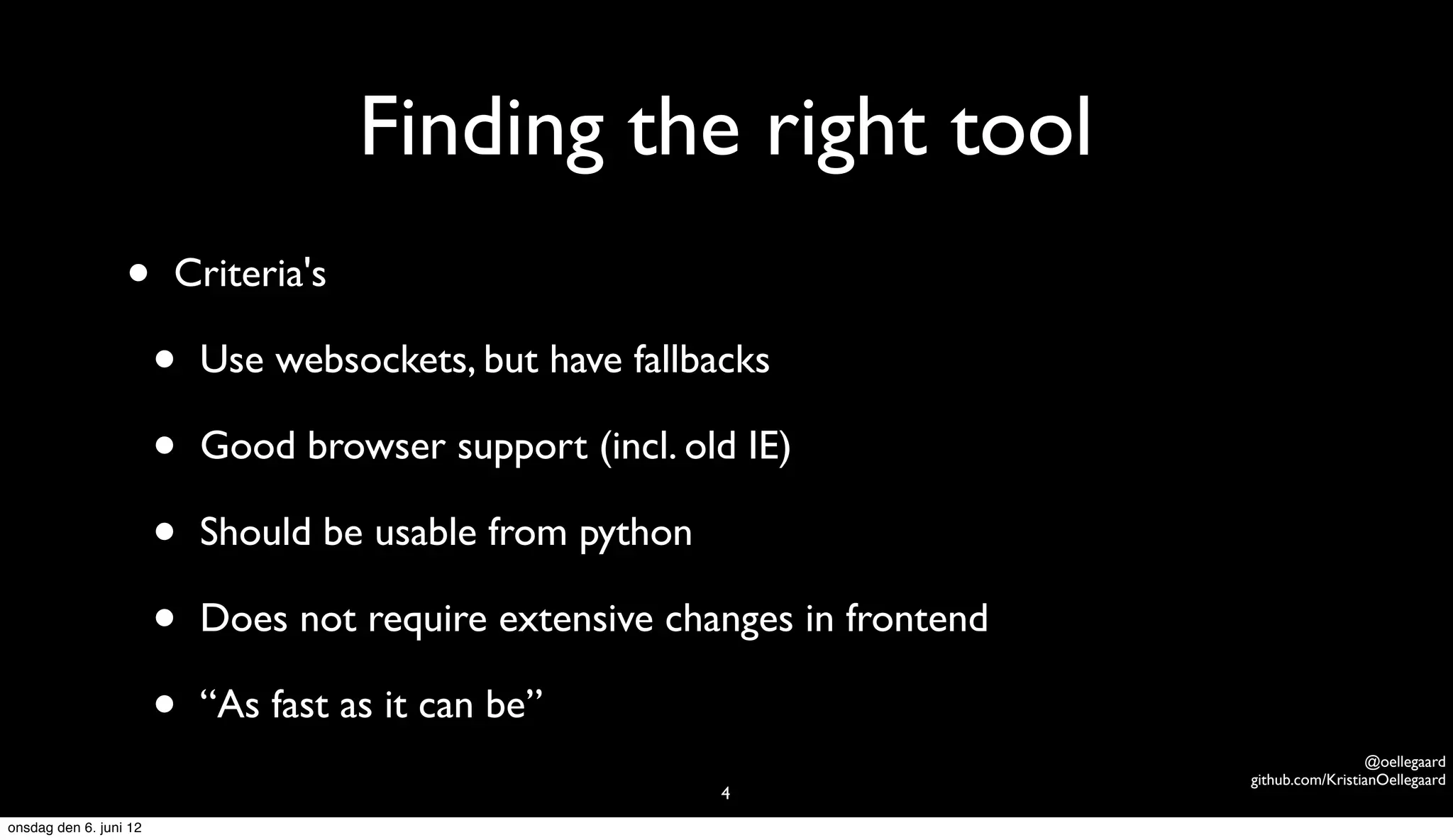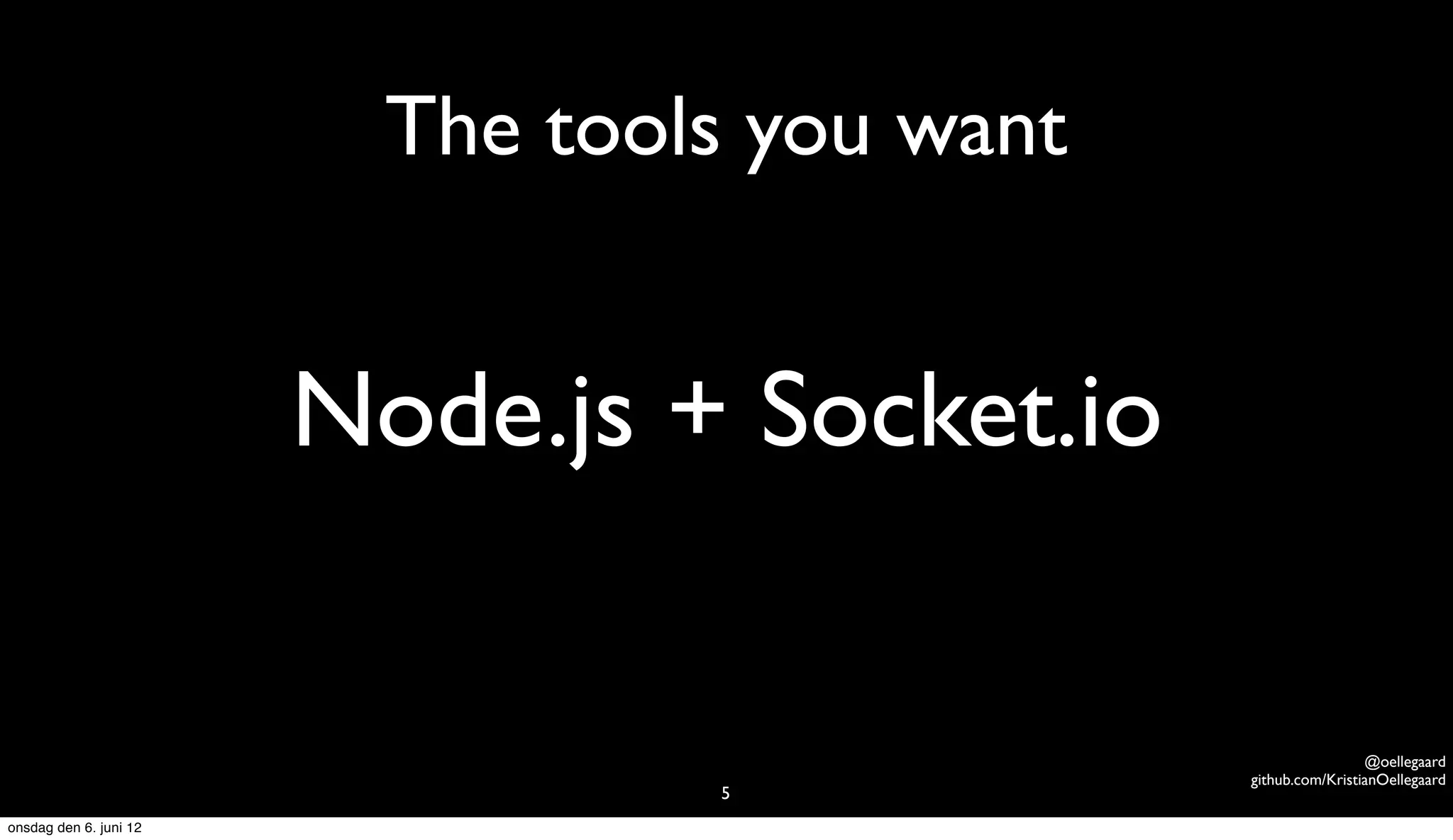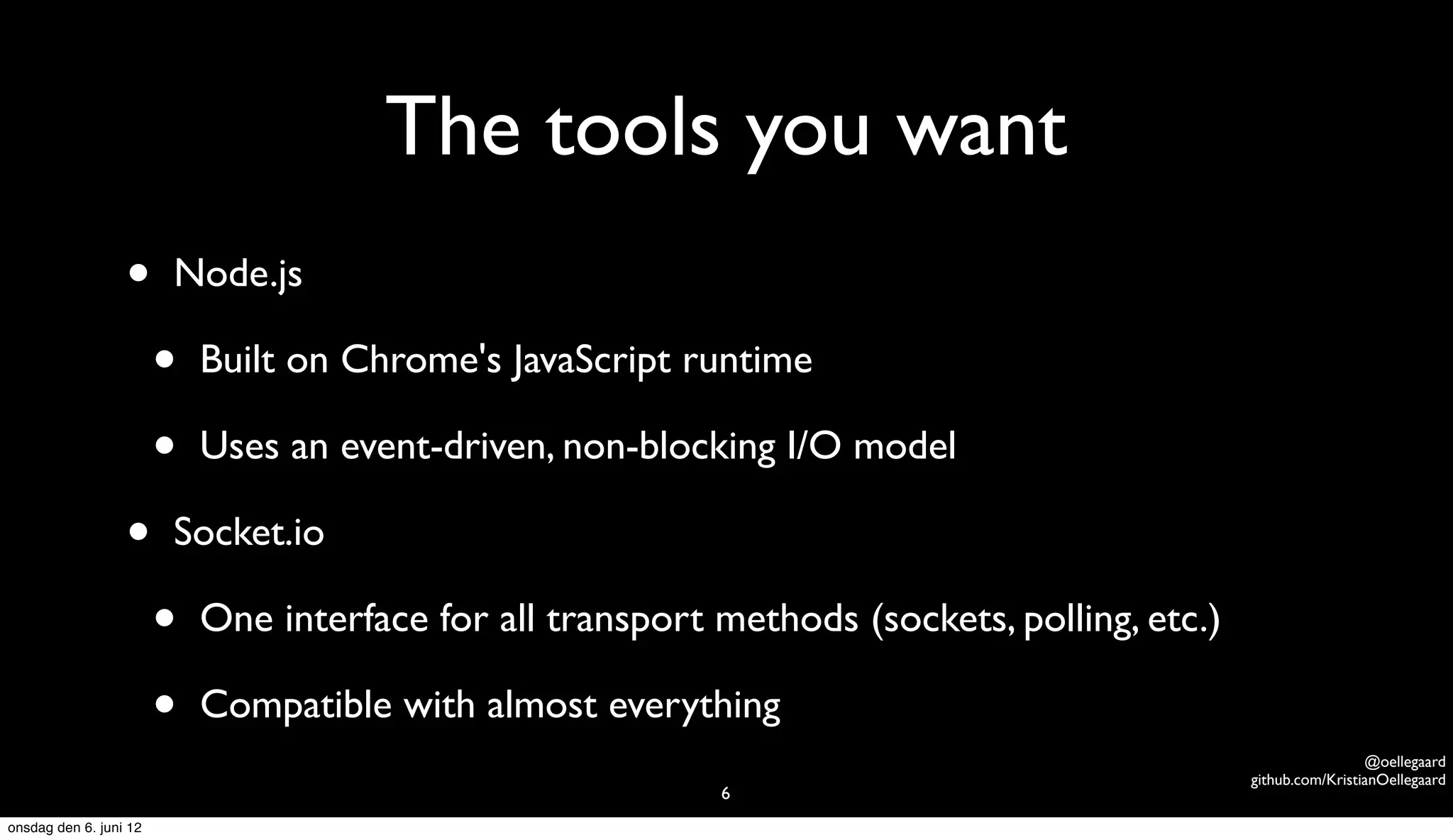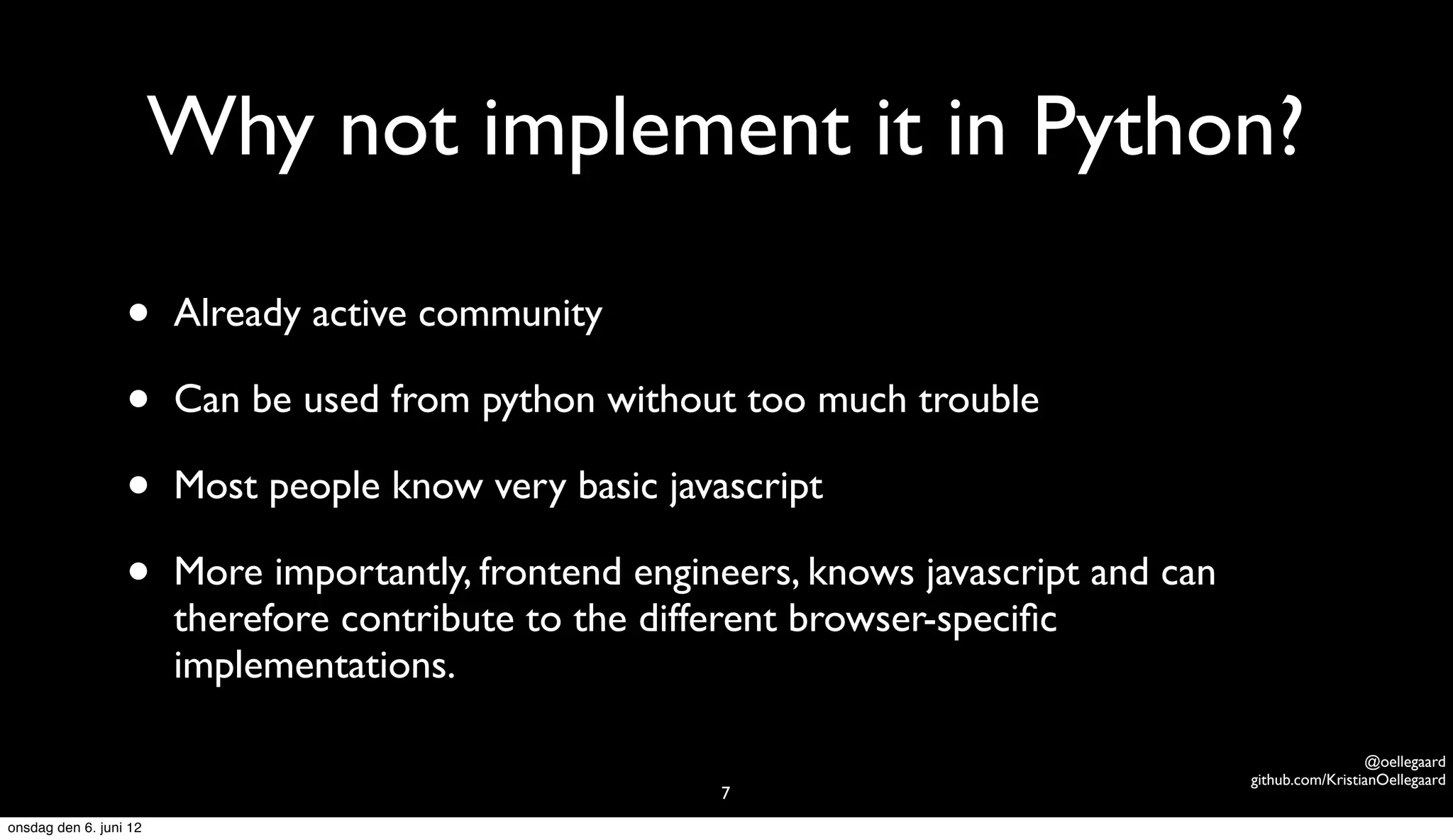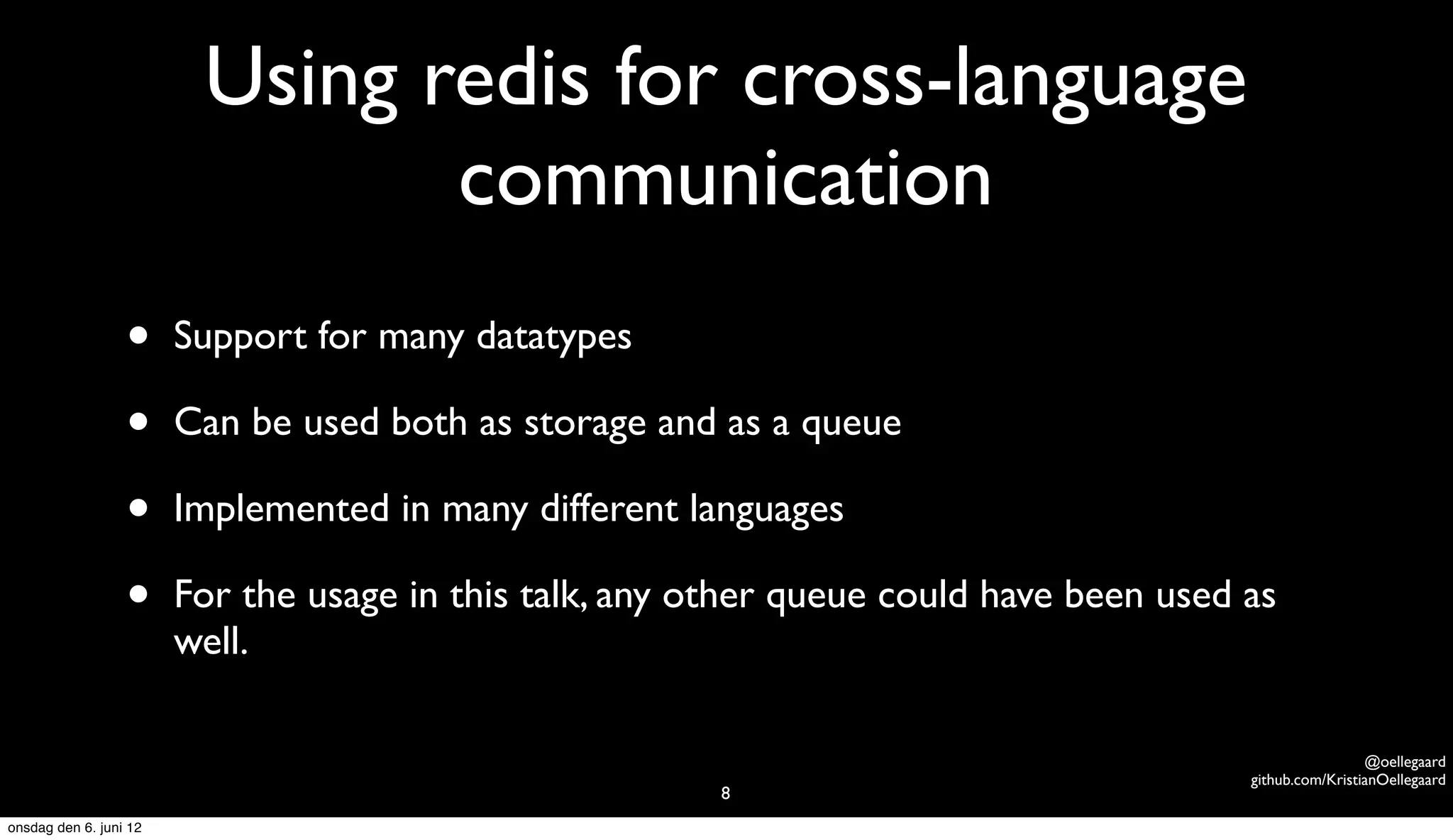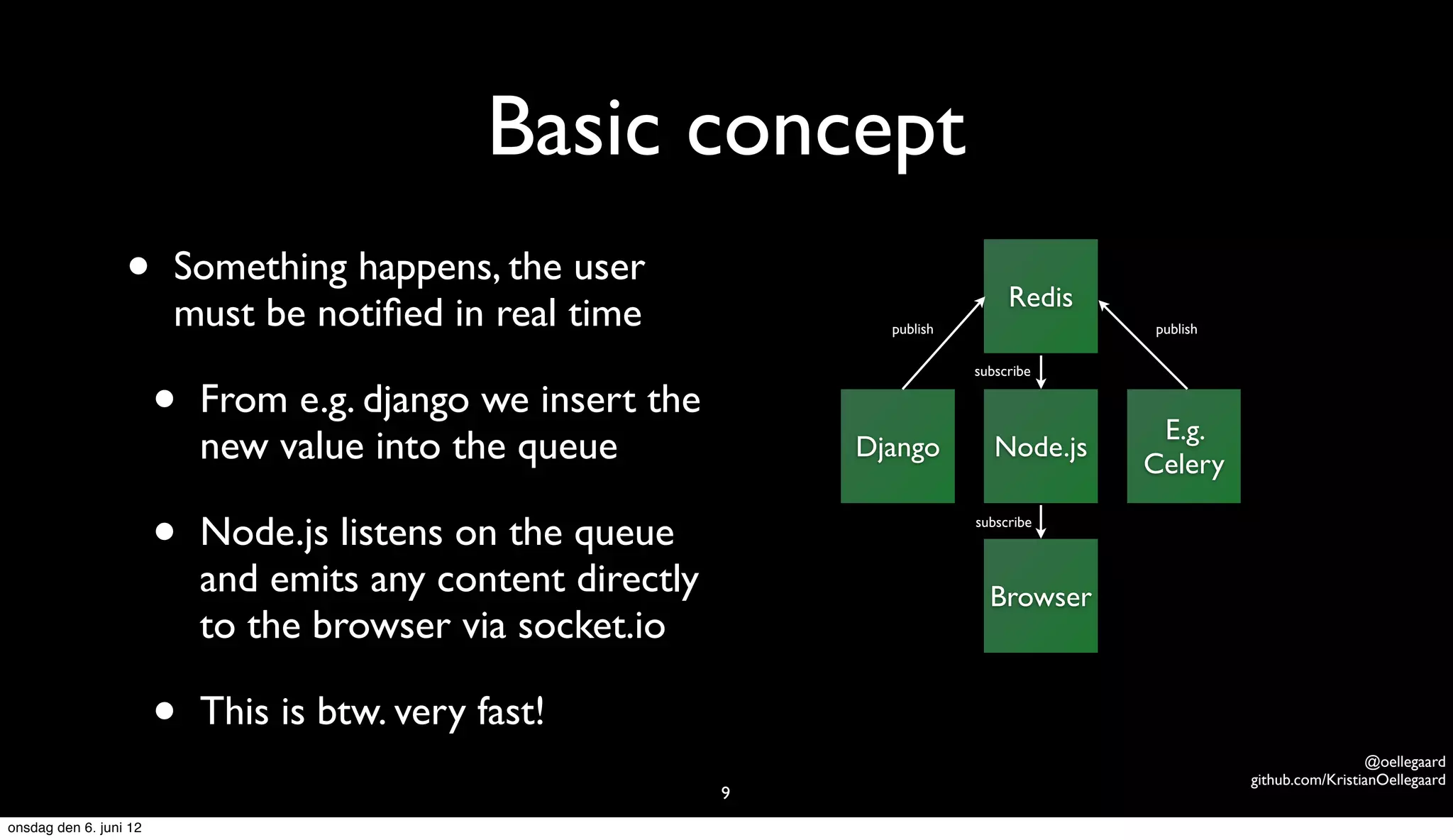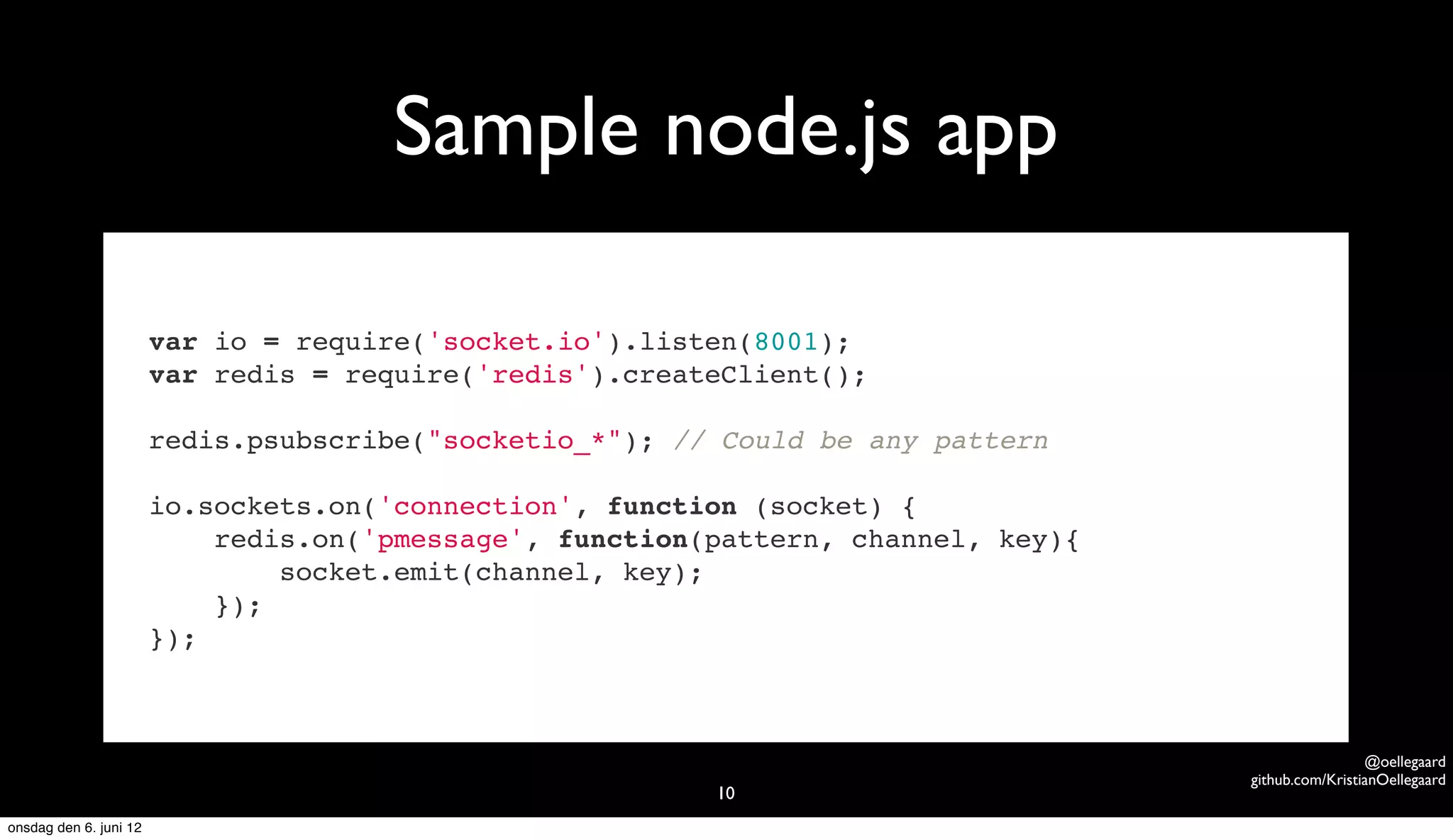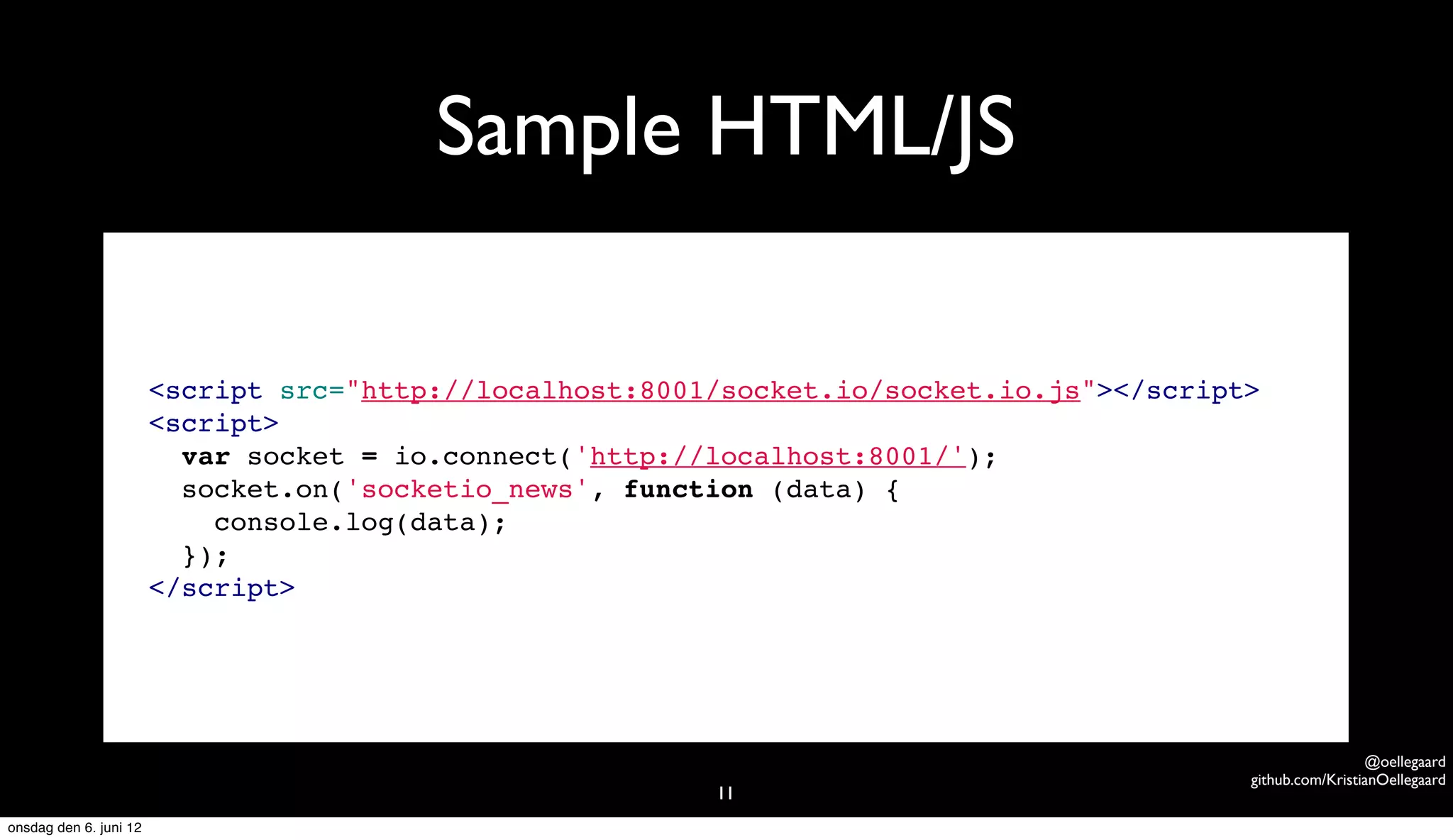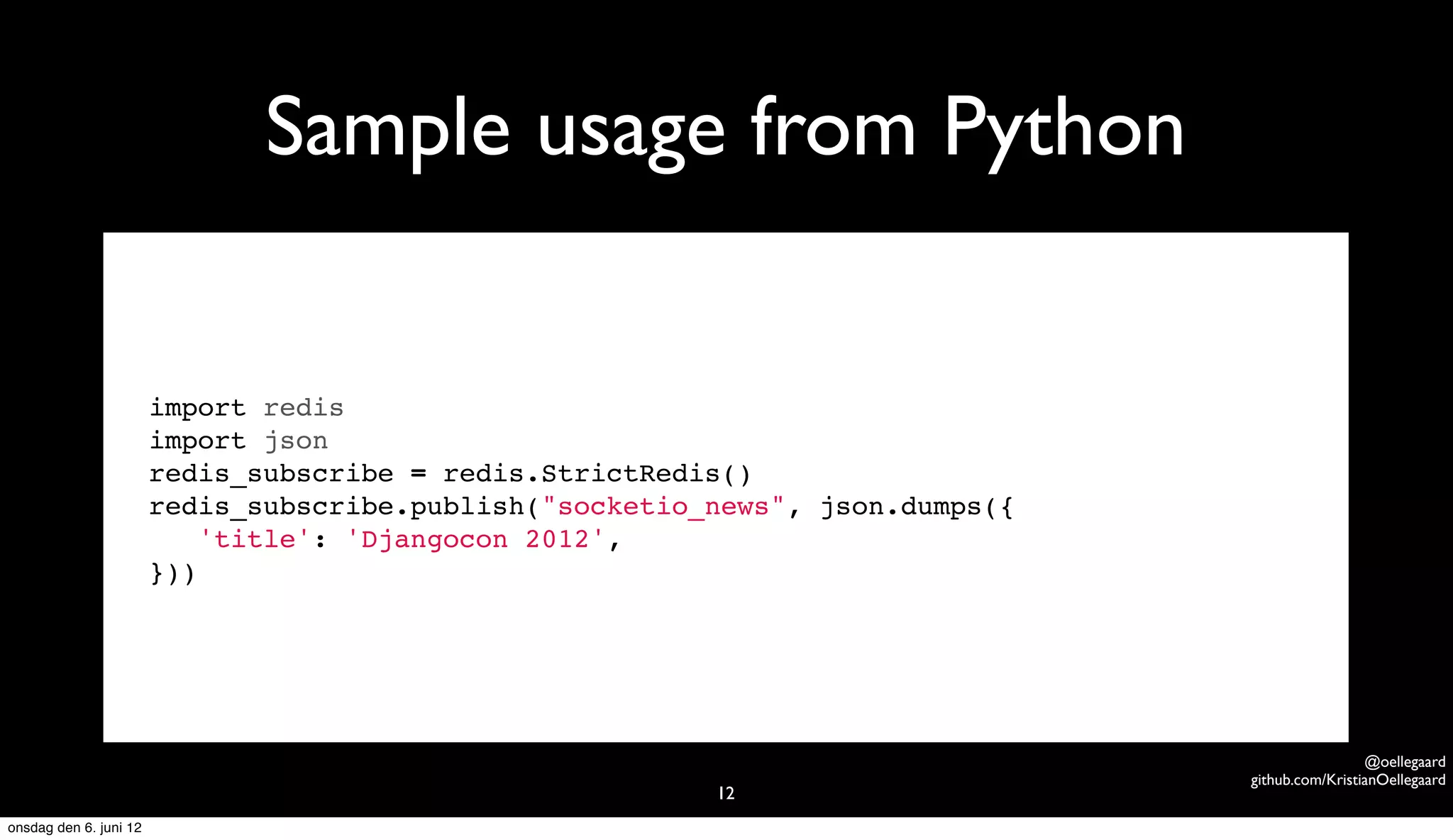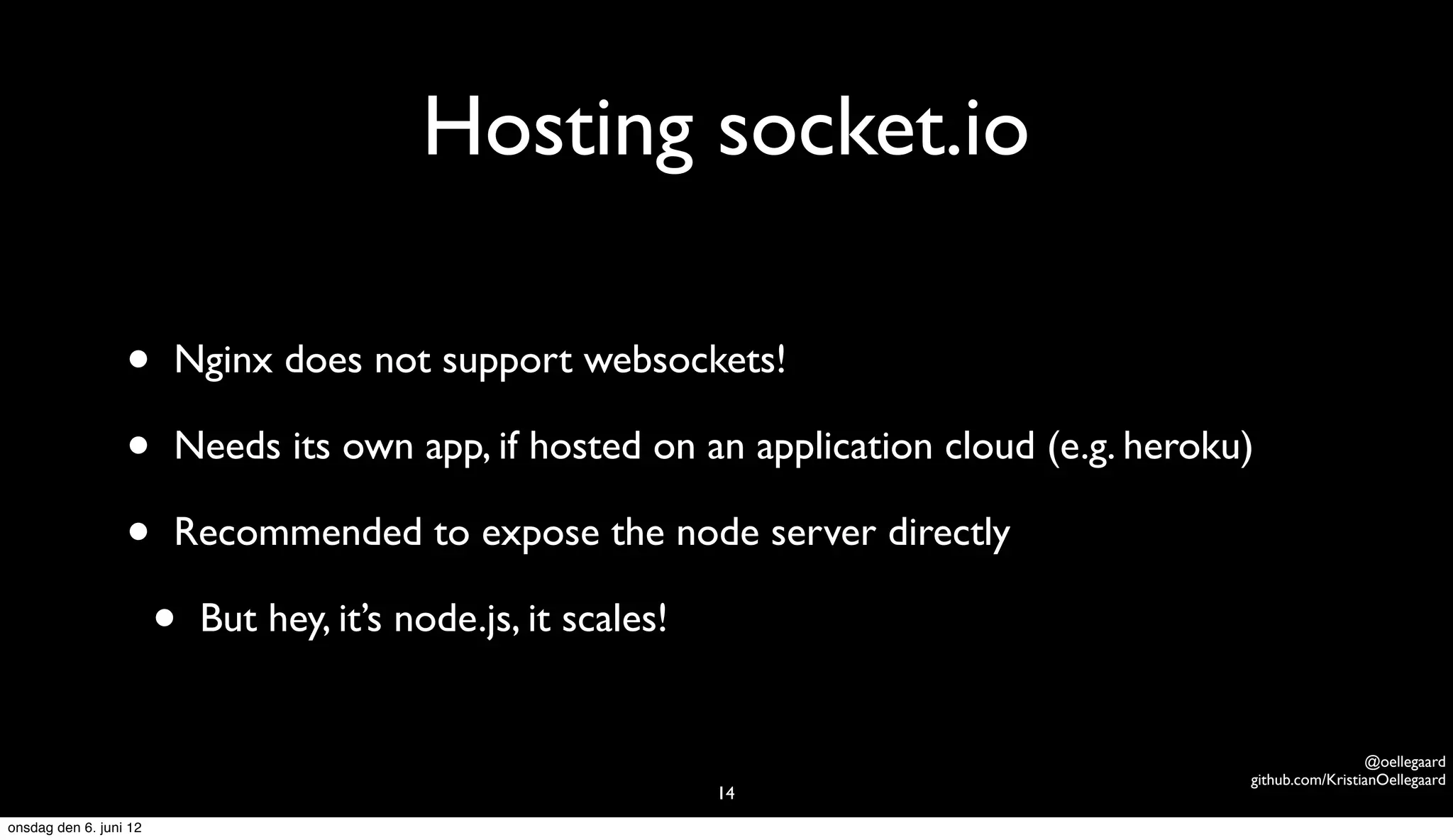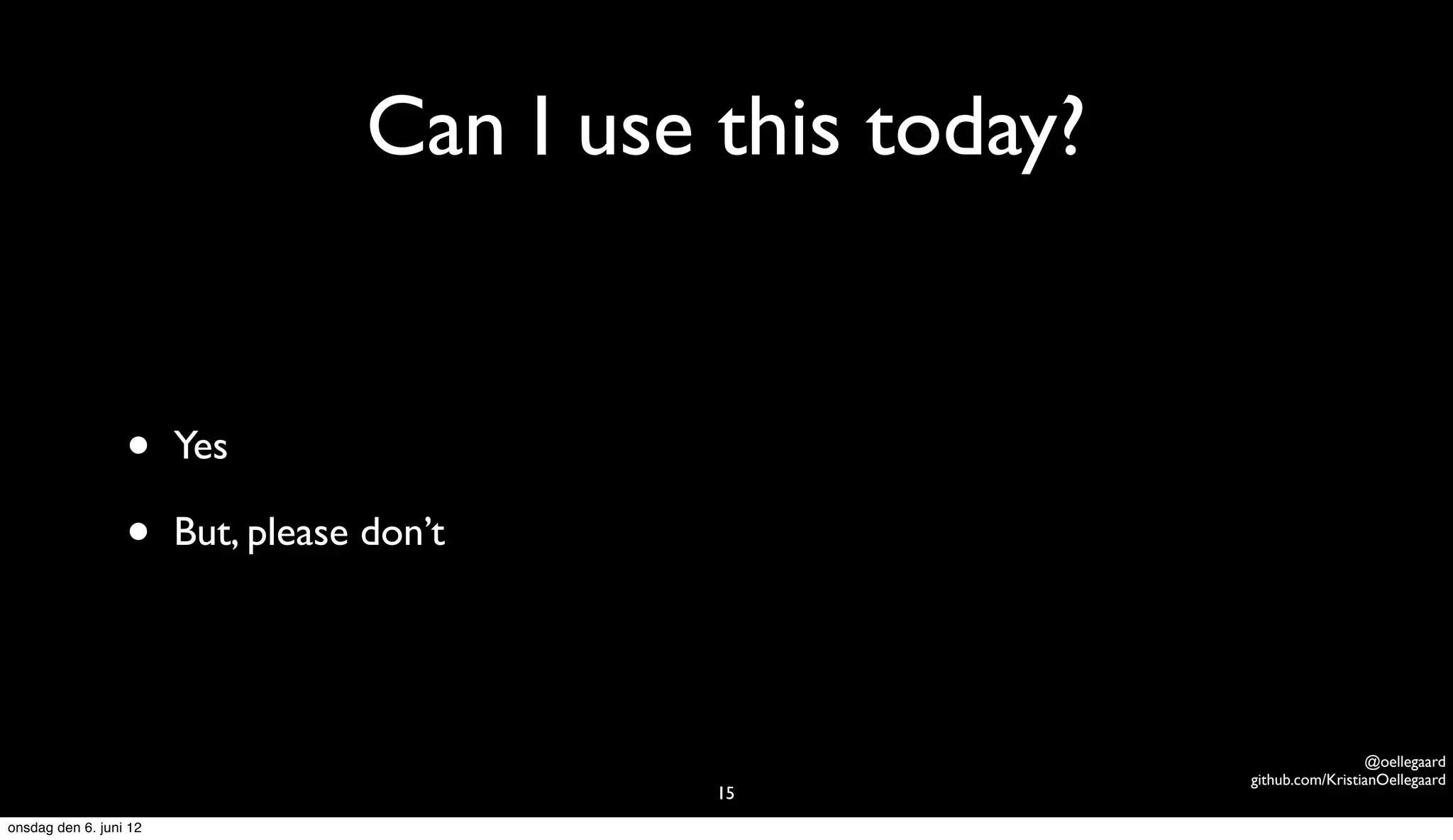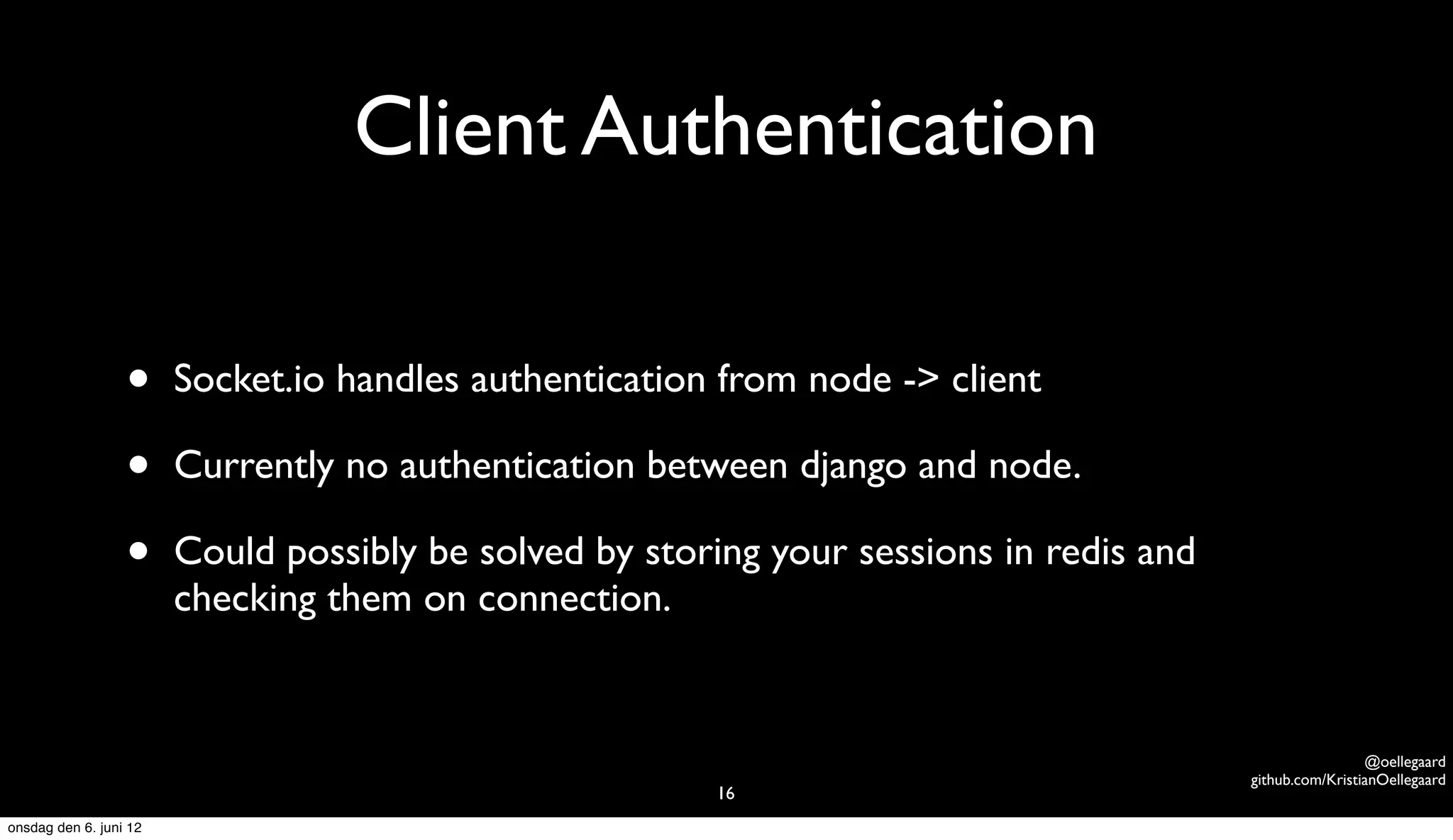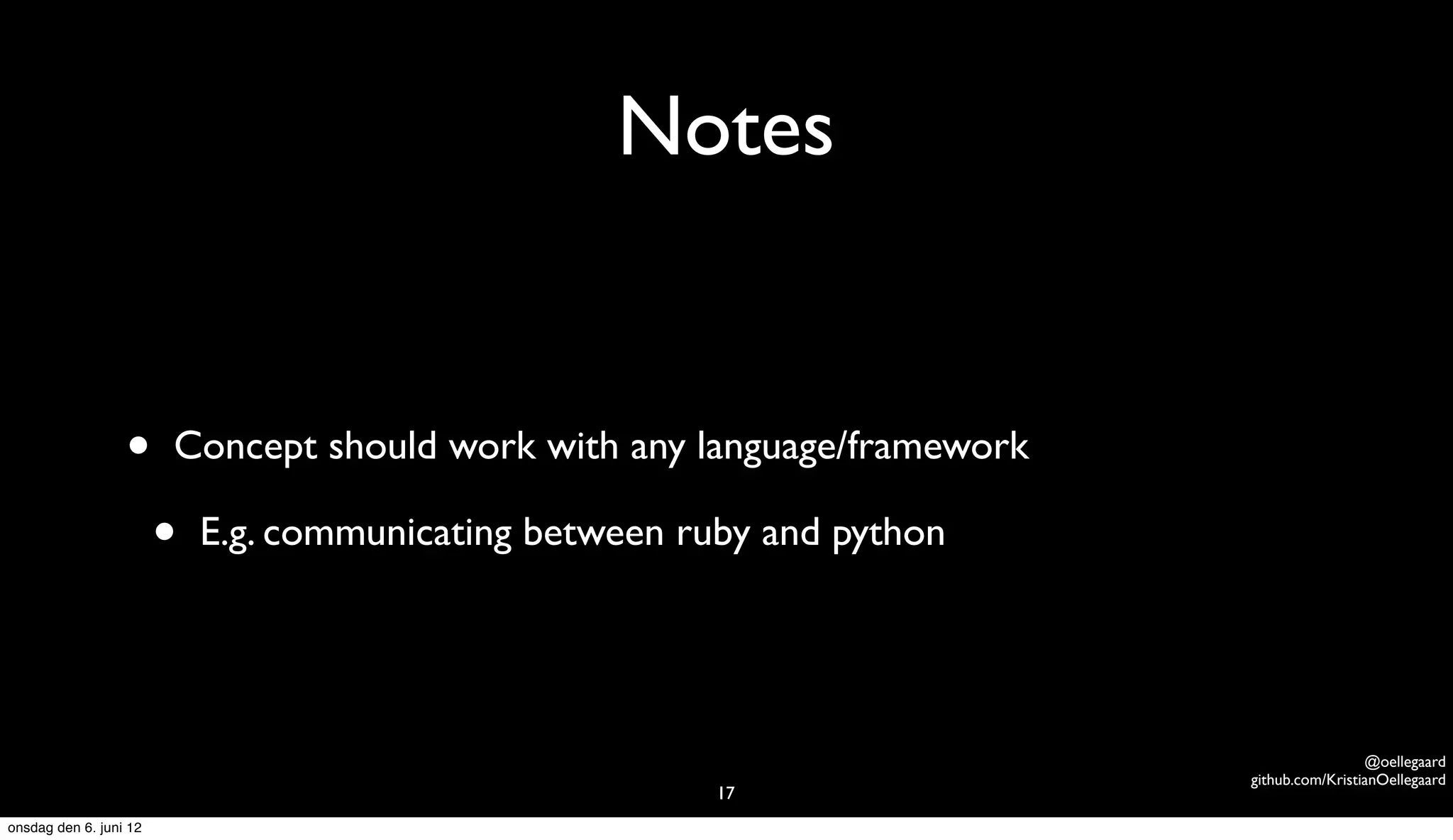Kristian Øllegaard presented an approach for implementing real-time web applications using Django. He discussed using Node.js with Socket.io for the real-time capabilities and Redis for cross-language communication between the Node.js and Django applications. He demonstrated publishing messages from Django to a Redis queue that the Node.js application subscribed to and then emitted to the browser via Socket.io, providing real-time updates. While the approach can be used today, he cautioned against doing so without further work on aspects like client authentication.

